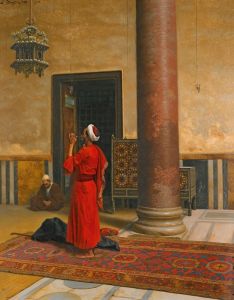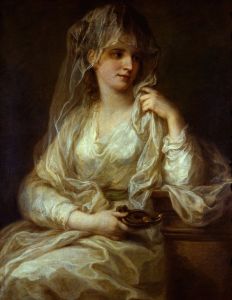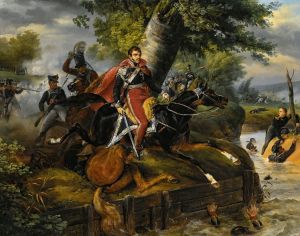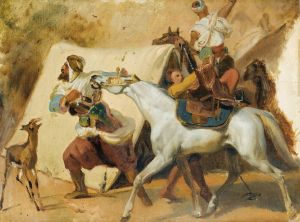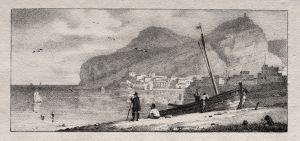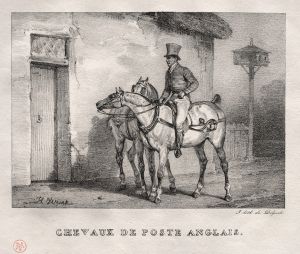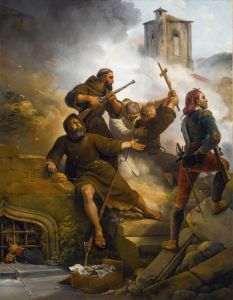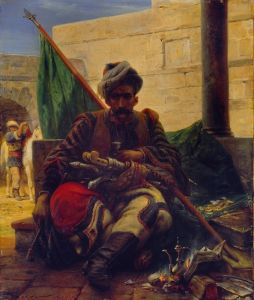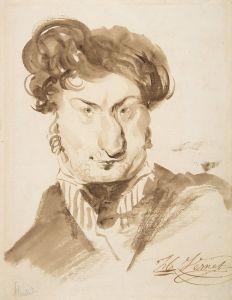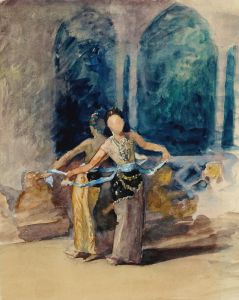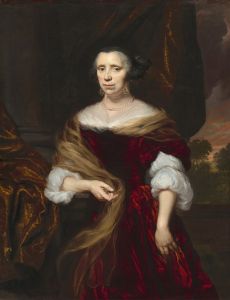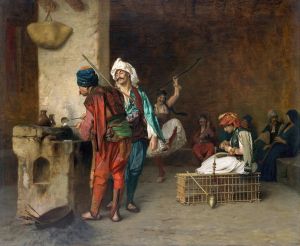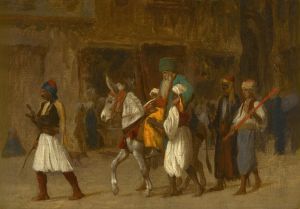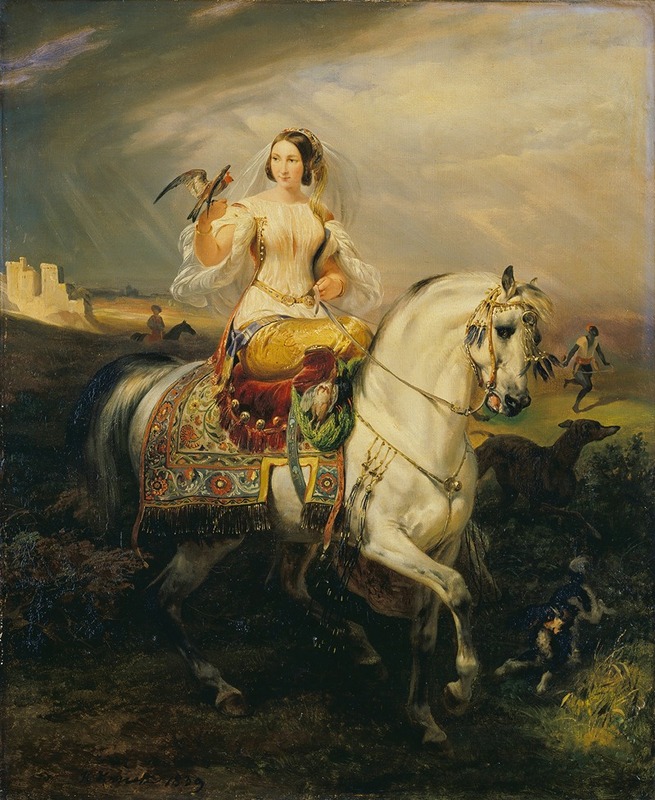
An Algerian Lady Hawking
A hand-painted replica of Horace Vernet’s masterpiece An Algerian Lady Hawking, meticulously crafted by professional artists to capture the true essence of the original. Each piece is created with museum-quality canvas and rare mineral pigments, carefully painted by experienced artists with delicate brushstrokes and rich, layered colors to perfectly recreate the texture of the original artwork. Unlike machine-printed reproductions, this hand-painted version brings the painting to life, infused with the artist’s emotions and skill in every stroke. Whether for personal collection or home decoration, it instantly elevates the artistic atmosphere of any space.
"An Algerian Lady Hawking" is a painting by the French artist Horace Vernet, created in the 19th century. Horace Vernet, born in 1789, was a prominent painter known for his works that often depicted military scenes, historical events, and Orientalist subjects. His interest in Orientalism, a genre that romanticized and depicted the cultures of the Middle East and North Africa, was part of a broader trend among European artists during this period.
The painting "An Algerian Lady Hawking" is an example of Vernet's Orientalist work. It portrays a woman from Algeria engaged in the practice of falconry, a traditional hunting method using trained birds of prey. Falconry has a long history in the Arab world and is often associated with nobility and prestige. This subject matter reflects the European fascination with the exotic and the romanticized view of North African and Middle Eastern cultures during the 19th century.
Vernet's depiction of the Algerian lady is characterized by attention to detail and a vivid portrayal of her attire and surroundings. The painting captures the elegance and grace of the woman, highlighting her traditional clothing, which may include richly colored fabrics and intricate patterns. The falcon, perched on her arm, is depicted with precision, emphasizing the skill and control required in the art of falconry.
The setting of the painting is likely inspired by Vernet's travels and the accounts of others who visited North Africa. During the 19th century, Algeria was a French colony, and Vernet, like many of his contemporaries, was influenced by the French colonial presence in the region. This influence is evident in the way he portrays the landscape and the cultural elements within the painting.
Vernet's work, including "An Algerian Lady Hawking," contributed to the popularization of Orientalist art in Europe. His paintings were well-received and often exhibited in prestigious venues, attracting the attention of art collectors and the general public. Vernet's ability to capture the allure and mystery of the Orient, as perceived by Europeans, played a significant role in shaping Western perceptions of North African and Middle Eastern cultures.
While "An Algerian Lady Hawking" is a testament to Vernet's skill as an artist, it is also important to consider the broader context of Orientalism and its implications. Orientalist art has been critiqued for its tendency to exoticize and stereotype non-European cultures, often reflecting the colonial attitudes of the time. Vernet's work, like that of many Orientalist artists, can be seen as both a celebration of cultural diversity and a product of its era's complex power dynamics.
In summary, "An Algerian Lady Hawking" by Horace Vernet is a notable example of 19th-century Orientalist art, capturing the elegance of an Algerian woman engaged in falconry. The painting reflects Vernet's interest in the exotic and his ability to convey the beauty and intricacy of North African culture, while also serving as a reminder of the historical context in which such works were created.






